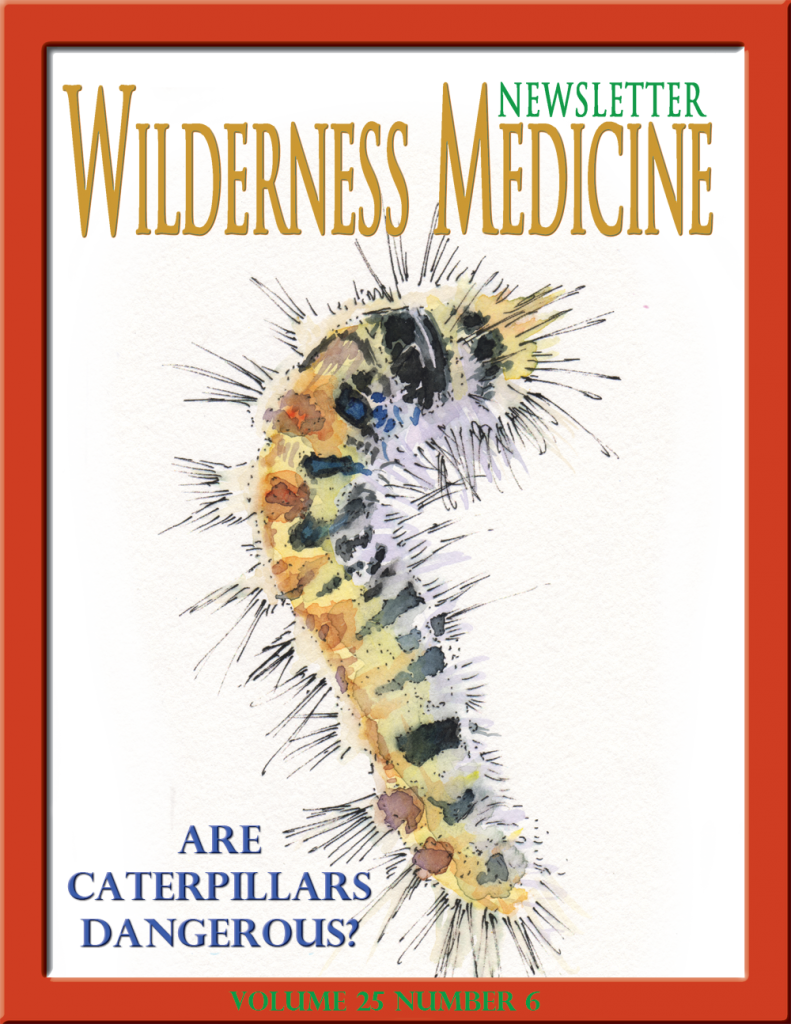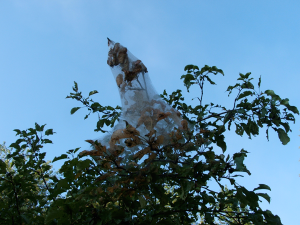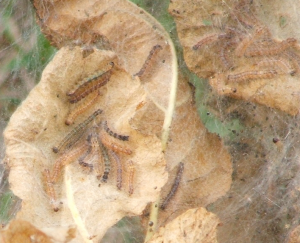DANGEROUS CATERPILLARS

ISSN-1059-6518
CATERPILLARS
By Frank Hubbell, DO
Illustrations By T.B.R. Walsh

What on earth compelled us to write an article about venomous caterpillars? What a curious topic. The whole process began in our very own back yard. As it turns out, this has been a good year for tent caterpillars. There have been lots of them creating their nasty looking web tents in our apple trees. The good news is that the leafy destruction of the trees does little or no harm to the tree itself. But,  if you get a couple of those hairy little caterpillars down the back of your shirt as you clean the tents out of the trees, and you end up with quite an uncomfortable rash.
if you get a couple of those hairy little caterpillars down the back of your shirt as you clean the tents out of the trees, and you end up with quite an uncomfortable rash.
How does a caterpillar cause a rash?
Caterpillars are the larval forms of the members of the order Lepidoptera, insects that consist of moths and butterflies. We enjoy these beautiful little insects as they flit about the flowers collecting nectar or fly around the front porch light. Most of us consider them to be harmless creatures to be admired and enjoyed. But, as it turns out, some of them in their larval, or caterpillar, form can be quite harmful and dangerous to humans. Many of these larvae have defense mechanisms to help minimize the risk of being eaten by a bird, frog, or other beast. It is these defense mechanisms that can cause us problems as well.
These caterpillar defense mechanisms include spiny bristles, setae which are long, fine hairs, and urticating hairs that have venom glands. In fact, there are several species of caterpillars in the jungles of South America that contain toxins potent enough to kill humans. These potentially lethal caterpillars are the larvae of the Bag Shelter Moth and the South American Silk Moth.
It is the puss caterpillar, Megalopyge opercularis, that is the most dangerous caterpillar in North America.
There is even a name for the contact dermatitis and other symptoms that are caused by coming in physical contact with a toxic caterpillar, lepidoterism, also known as moth or caterpillar dermatitis.
THE PROBLEM:
The problem is these fine hairs or spines , also referred to as setae, that cover the caterpillar and make it less appetizing to a bird or other consumers of crawling critters. These hairs are very irritating on the skin, if inhaled, they can cause respiratory distress and precipitate an asthma attack.
